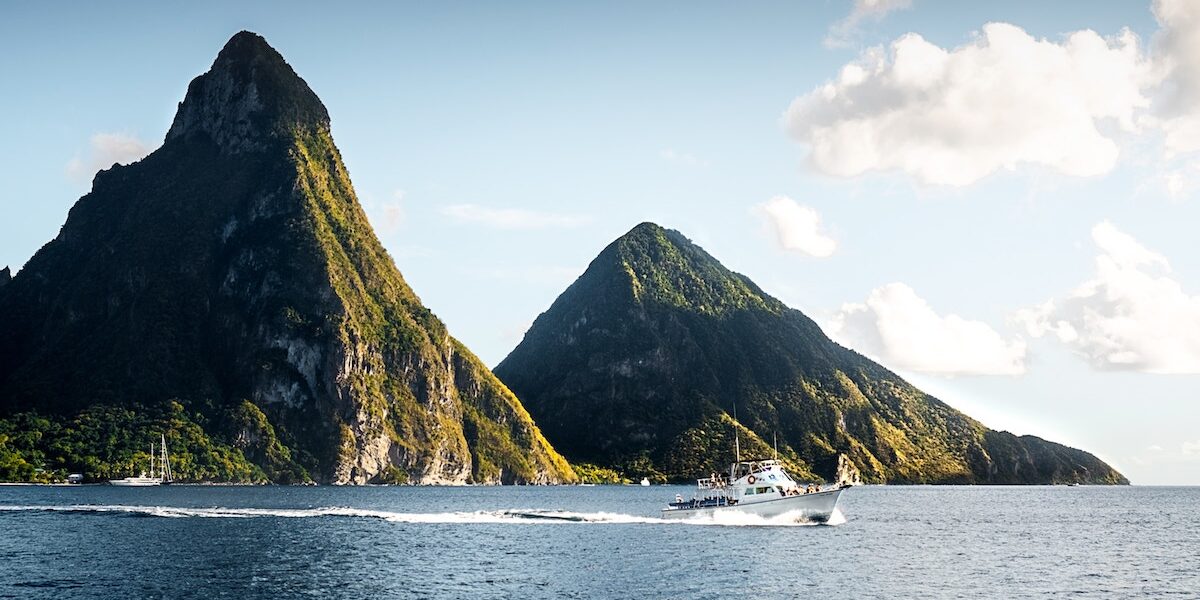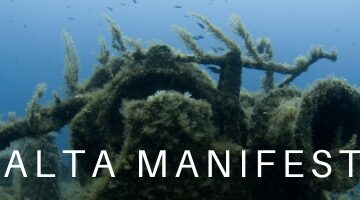Oceans Big Think – Launching the Grand Challenges for Ocean Conservation – at Scripps Institution of Oceanography
by Mark J. Spalding, President
I had just spent a week in Loreto, a coastal town in the state of Baja California Sur, Mexico. There I was reminded that just as all politics are local, so too is conservation—and often they are intertwined as everyone strives to balance multiple interests on the health of the resources on which we all depend. The plaque to designate the world heritage site, the students who benefitted from the Saturday night fundraiser, and the concerns of the citizenry are all concrete reminders of the small, but vital pieces of the global challenges we are trying to solve.
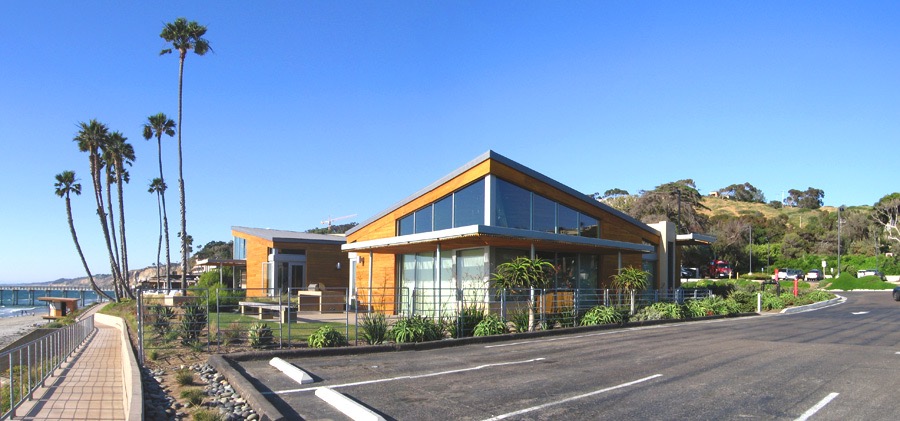 I was quickly brought back up to the multi-thousand foot level when I arrived in San Diego on a recent Sunday night. Setting up challenges implies that there are solutions, which is a good thing. Thus, I was at the Scripps Institution of Oceanography attending a meeting called “Oceans Big Think” that was intended to identify solutions that could be generated via a prize or a challenge competition (sourcing innovation can happen via prizes, hackathons, design sessions, directed innovation, university competitions, etc.). Hosted by Conservation X Labs and the World Wildlife Fund, it was heavily focused on using technology and engineering to solve the problems that face our ocean. The majority of the people were not ocean experts—the hosts called it a “summit of curated experts, innovators, and investors” gathered “to reimagine ocean conservation,” to connect existing dots in new ways to solve old problems.
I was quickly brought back up to the multi-thousand foot level when I arrived in San Diego on a recent Sunday night. Setting up challenges implies that there are solutions, which is a good thing. Thus, I was at the Scripps Institution of Oceanography attending a meeting called “Oceans Big Think” that was intended to identify solutions that could be generated via a prize or a challenge competition (sourcing innovation can happen via prizes, hackathons, design sessions, directed innovation, university competitions, etc.). Hosted by Conservation X Labs and the World Wildlife Fund, it was heavily focused on using technology and engineering to solve the problems that face our ocean. The majority of the people were not ocean experts—the hosts called it a “summit of curated experts, innovators, and investors” gathered “to reimagine ocean conservation,” to connect existing dots in new ways to solve old problems.
At The Ocean Foundation, we see solving problems as central to our mission, and we view the tools at our disposal as important, but also as part of a very comprehensive, multi-pronged approach. We want the sciences to inform us, we want technology and engineering solutions to be evaluated and applied where appropriate. Then, we also want to protect and steward our common heritage (our shared resources) via policy and regulatory structures that in turn are both enforceable and enforced. In other words, technology is a tool. It is not a silver bullet. And, thus I came to the Oceans Big Think with a healthy dose of skepticism.
Grand challenges are intended to be an optimistic way to list threats to the ocean. The hope is to imply that challenges represent opportunities. Clearly, as a shared starting point, ocean science (biological, physical, chemical, and genetic) has much to inform us about the threats to ocean life and human health and wellbeing. For this meeting, a background “landscape” document listed 10 threats to the ocean to be examined for the gathered experts to decide whether a “grand challenge” can be developed as a way to get at a solution for any or all of them.
These are the 10 threats to the ocean as framed by the document:
- A Blue Revolution for Oceans: Reengineering Aquaculture for Sustainability
- Ending and Recovering from Marine Debris
- Transparency and Traceability from Sea to Shore: Ending Over-Fishing
- Protecting Critical Ocean Habitats: New Tools for Marine Protection
- Engineering Ecological Resilience in Nearshore and Coastal Areas
- Reducing the Ecological Footprint of Fishing through Smarter Gear
- Arresting the Alien Invasion: Combating Invasive Species
- Combating the Effects of Ocean Acidification
- Ending Marine Wildlife Trafficking
- Reviving Dead Zones: Combating Ocean Deoxygenation, Dead Zones, and Nutrient Runoff
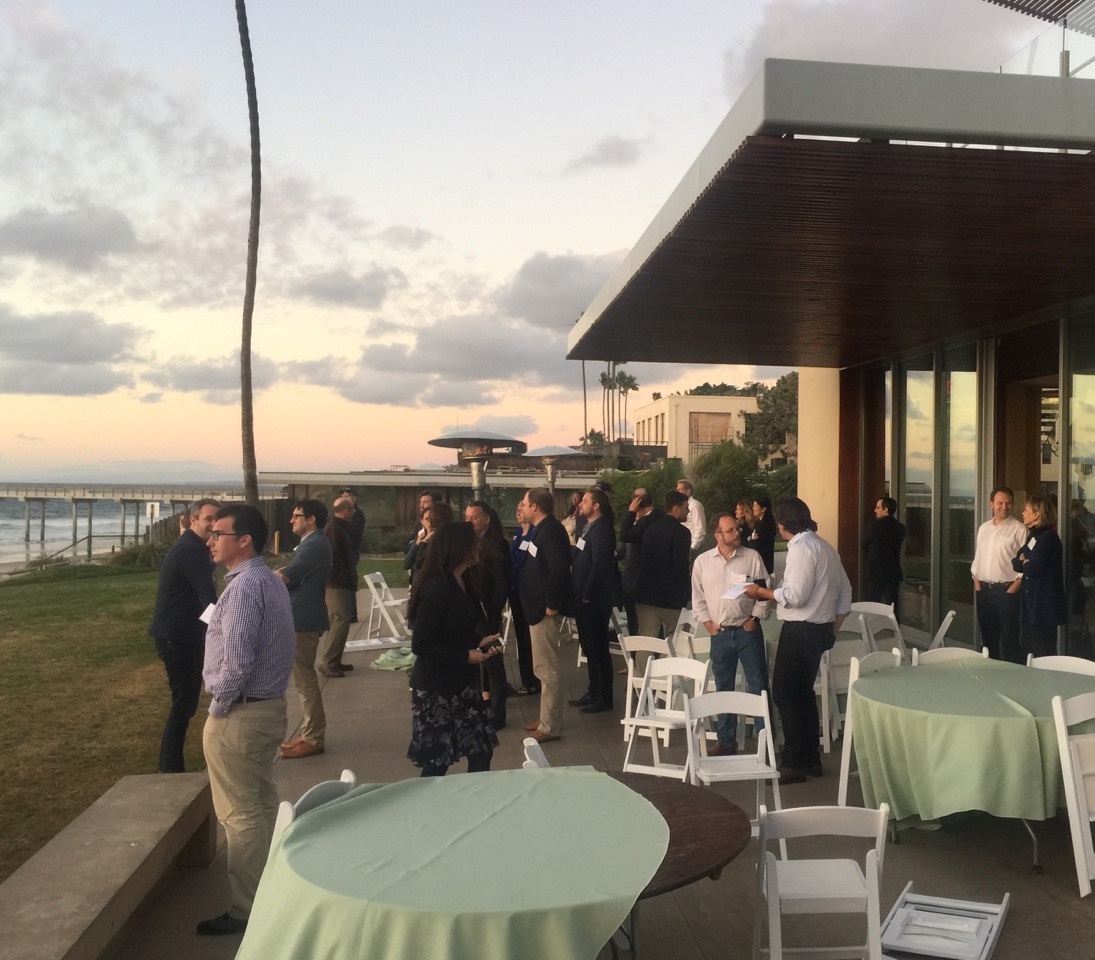 Starting from a threat, the goal is to identify the potential solutions, and whether any of them lend themselves to a challenge competition. That is to say, what part of the threat, or underlying condition that makes the threat worse, can be addressed by issuing a challenge that engages the broader tech-savvy public in solving it? Challenges are intended to create short-term incentives to invest in solutions, usually via a monetary prize (e.g. the Wendy Schmidt Ocean Health XPrize). The hope is that the prize will spark a solution that is revolutionary enough to help us leap over multiple slower-moving, more evolutionary steps, and thus progress more quickly towards sustainability. The funders and institutions behind these competitions are seeking transformative change that can happen quickly, in much less than a decade. It is intended to pick up the pace and increase the scale of solutions: All in the face of the rapid pace and vast scale of the destruction of the ocean. And if the solution can be found through applied technology or engineering, then the potential for commercialization creates longer-term incentives, including additional sustained investment.
Starting from a threat, the goal is to identify the potential solutions, and whether any of them lend themselves to a challenge competition. That is to say, what part of the threat, or underlying condition that makes the threat worse, can be addressed by issuing a challenge that engages the broader tech-savvy public in solving it? Challenges are intended to create short-term incentives to invest in solutions, usually via a monetary prize (e.g. the Wendy Schmidt Ocean Health XPrize). The hope is that the prize will spark a solution that is revolutionary enough to help us leap over multiple slower-moving, more evolutionary steps, and thus progress more quickly towards sustainability. The funders and institutions behind these competitions are seeking transformative change that can happen quickly, in much less than a decade. It is intended to pick up the pace and increase the scale of solutions: All in the face of the rapid pace and vast scale of the destruction of the ocean. And if the solution can be found through applied technology or engineering, then the potential for commercialization creates longer-term incentives, including additional sustained investment.
In some cases, the technology has already been developed but is not yet widely adopted due to complexity and cost. Then a prize may be able to inspire the development of more cost-effective technology. We recently saw this in the XPrize competition to create more accurate, durable, and inexpensive pH sensors for ocean use. The winner is a $2,000 unit that does better than the current industry standard, which costs $15,000 and is not as long lasting or reliable.
When The Ocean Foundation evaluates proposed technology or engineering solutions, we know that we need to be precautionary and think very hard about unintended consequences, even as we recognize the severity of the consequences for not acting to address these threats. We need to proceed by asking questions about what harm derives from such proposals as dumping iron filings to promote algae growth; producing genetically modified organisms (GMOs); introducing species to curb aggressive invaders; or dosing reefs with antacids—and to answer those questions before any experiment goes to scale. And, we need to emphasize natural solutions and biological remediation that work with our ecosystems, rather than engineered solutions that do not.
During the “big think” at Scripps, the group narrowed the list down to focus on sustainable aquaculture and illegal fishing. The two are related in that aquaculture, already at global commercial scale and growing, drives much of the demand for fishmeal and fish oil that results in overfishing in certain regions.
In the case of sustainable aquaculture, there may be a number of technology or engineering solutions that could be the subject of a prize or challenge competition to change systems / inputs.
These are the ones that the experts in the room see as addressing specific aquacultural standards:
- Develop aquaculture technology designed for herbivorous species not currently farmed (farming carnivorous fish is inefficient)
- Breed (as has been done in terrestrial animal husbandry) fish with better feed-conversion ratios (genetic-based success, without modification of genes)
- Create new highly nutritional, cost-effective feed (that does not rely on depleting wild caught stocks for fish meal or fish oil)
- Develop more cost effective, replicable technology to decentralize production to be closer to markets (fosters locavore movement) for increased storm resilience, integration with urban organic farms, and diminution of harm to the coasts
To halt illegal fishing, the experts in the room imagined the repurposing of existing technology, including vessel monitoring systems, drones, AUV’s, wave gliders, satellites, sensors, and acoustic observation equipment to increase transparency.
We asked ourselves multiple questions and tried to identify where a prize (or similar challenge) might help move things along towards better stewardship:
- If community self-governance (the triumph of the commons) constitutes some of the best stewardship of fisheries (as an example); how do we do more of it? We need to ask how it works. In those small geographical scale circumstances every boat and every fisher is known and watched. The question the available technology presents is can we replicate this recognition and vigilance at a much larger geographic scale using technology.
- And assuming that we can see and know every ship and every fisher in that larger geographic scale, which means we can also see the illegal fishers, do we have a way to share that information back to remote communities (particularly in small island developing states); some of which are without electricity much less the Internet and radios? Or even where receiving the data is not a problem, how about the capacity to process huge volumes of data and stay up to date with it?
- Do we have a way to interdict those who violate the law in (relatively) real time? Can incentives also be designed for legal catch compliance and reporting by other fishers (because there will never be enough funding for enforcement)? For example, do vessel transponders reduce insurance costs due to the side benefit of collision avoidance? Can insurance costs go up if a vessel gets reported and confirmed?
- Or, can we someday arrive at the equivalent of a speed camera, or stop light camera, that takes a picture of illegal fishing activity from an autonomous wave glider, uploads it to a satellite and issues a citation (and a fine) directly to the boat owner. The high definition camera exists, the wave glider exists, and the ability to upload the photograph and GPS coordinates exists.
Experimental programs are under way to see if we can integrate what we already know and apply it to illegal fishing activity by legal fishing boats. However, as we already know from extant instances of interdiction of illegal fishing activity, it is often extremely difficult to know the real nationality and ownership of a fishing vessel. And, for particularly remote locations in the Pacific or in the Southern Hemisphere how do we build a system to maintain and repair the robots operating in harsh saltwater environments?
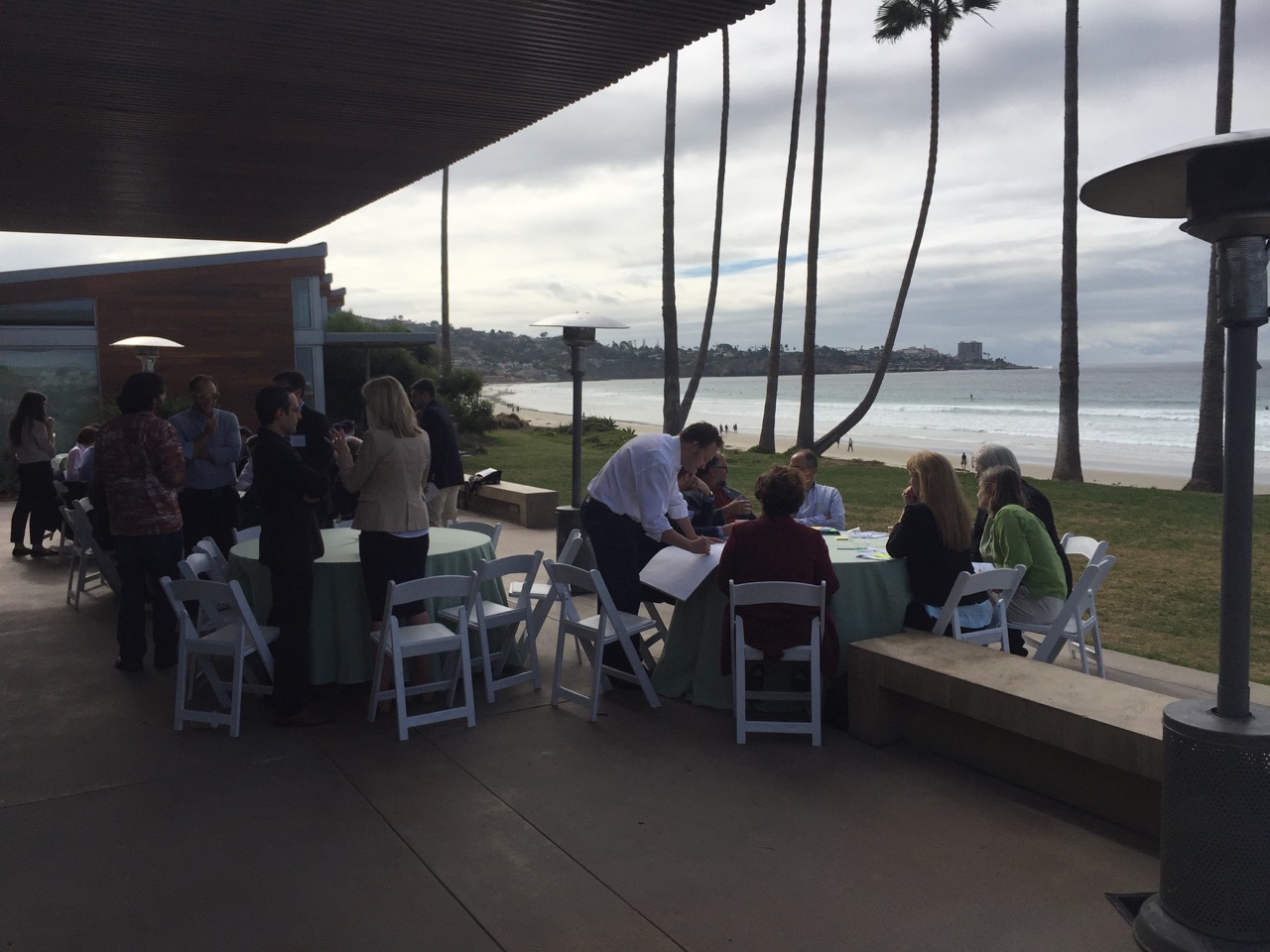 The group also recognized the need to better measure what we take from the ocean, avoid mislabeling, and reduce costs for certification of products and fisheries in order to promote traceability. Does traceability have a technology component? Yes, it does. And, there are a number of folks working on various tags, scan-able barcodes, and even genetic code readers. Do we need a prize competition to push the work already being done and leap to the best-in-class solution by setting up the criteria for what we need it to accomplish? And, even then, does the investment in sea-to-table traceability only work for the high value fish products for the high-income developed world?
The group also recognized the need to better measure what we take from the ocean, avoid mislabeling, and reduce costs for certification of products and fisheries in order to promote traceability. Does traceability have a technology component? Yes, it does. And, there are a number of folks working on various tags, scan-able barcodes, and even genetic code readers. Do we need a prize competition to push the work already being done and leap to the best-in-class solution by setting up the criteria for what we need it to accomplish? And, even then, does the investment in sea-to-table traceability only work for the high value fish products for the high-income developed world?
As we said before, the problem with some of these technologies that have to do with watching and documenting is that they create a lot of data. We have to be prepared to manage that data, and while everyone loves new gadgets, few like maintenance, and harder still is getting the money to pay for it. And open, accessible data can run headlong into marketability of data that might create a commercial reason for maintenance. Regardless, data that may be converted to knowledge is a necessary but not sufficient condition for behavioral change. In the end, data and knowledge have to be shared in a way that includes cues and the right kind of incentives to change our relationship with the ocean.
At the end of the day, our hosts had tapped into the expertise of the fifty people in the room and developed a draft list of potential challenges. As with all efforts to speed up processes, there remains the need to ensure that leapfrogging stages in the development of a system does not result in unintended consequences that either stymie progress, or, send us back over familiar ground to work on these issues again. Good governance is dependent on good implementation and good enforcement. As we strive to improve the human relationship with the ocean, we must also strive to ensure that those mechanisms are in place to protect vulnerable communities of all kinds, in the water and on land. That core value should be interwoven in any “challenge” we generate for the greater human community to devise a solution.
